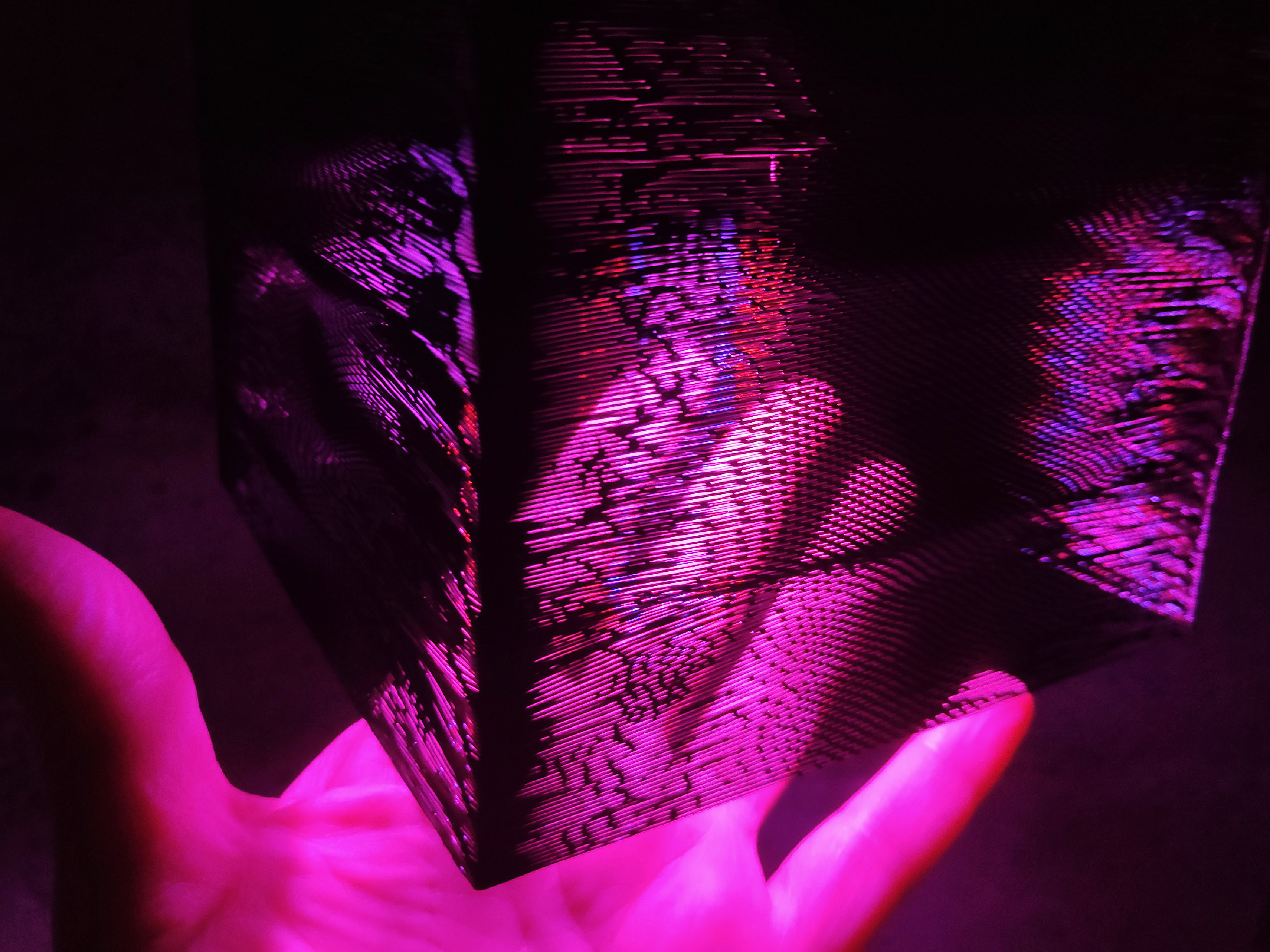
Plume. Print-In-Place Lamp
prusaprinters
<p>In a new way of laying the threads, I was able to reproduce the texture of the bird feathers. I myself do not fully understand what creates such a pulsating pattern: perhaps this is a trace from the operation of a stepper motor, or maybe something else. This amazing effect is obtained from the slightly non-parallel lines when printing the next layer. I tried to make similar surfaces with slightly different angles, but I was unable to repeat this result. I can't even promise you that an identical pattern will be achieved on your printer.</p> <figure class="media"> <oembed url="https://www.youtube.com/embed/BzfiXcitp_k"></oembed> </figure> <p>It is hard to believe, but such a complex pattern is achieved with completely straight lines: printing is carried out with "bridges" in half the width, and to its center the lines of the layers intersect. I have used similar bridges in Orbital lamp, (<a href="https://www.prusaprinters.org/prints/41007-orbital-structural-printing-print-in-place-lamp">https://www.prusaprinters.org/prints/41007-orbital-structural-printing-print-in-place-lamp</a>) and Liquid Cuprum (<a href="https://www.prusaprinters.org/prints/40606-liquid-cuprum-print-in-place-lampshade">https://www.prusaprinters.org/prints/40606-liquid-cuprum-print-in-place-lampshade</a>) but with a different effect.</p> <p>The printing is extremely economical - one layer of "feather" walls and quite fast (just over 3 hours at maximum height).<br/> For a stronger grip in the corners, I used a small looped outward release, as in the “fluffy” Polar Sheep (<a href="https://www.prusaprinters.org/cs/prints/40124-polar-sheep-lamp">https://www.prusaprinters.org/cs/prints/40124-polar-sheep-lamp</a>) but with a different geometry.</p> <p>The result is a very thin and translucent, like a veil, surface - with thread edges and a mesh in the center. It lets in light even when using black plastic.<br/> The surface bends slightly from shrinkage, but I liked this effect - it creates an iridescent texture that changes beautifully with eye movement. It is possible to do this in 3D printing, but it is difficult or impossible to implement in traditional technologies such as injection molding or milling.</p> <p>I had in my hands a blue-red phytolamp for growing plants, and I inserted it into the lampshade for a magical image. I do not know how useful or harmful this light is for a person with prolonged use, but a lamp of any color can be installed in the lampshade.</p> <p>Shade fits IKEA HEMMA lamp and most other pendants with a socket of about 40 mm. It is not worth using incandescent lamps, it is better to install "cold" ones, for example LED ones.</p> <p>This project is an experiment, an attempt to introduce an element of randomness into identical 3D printing objects and create a living and organic image. I have deliberately kept small, unpredictable inaccuracies in thread placement and deformations, which complement the simple cubic shape of the shade.</p> <h3>Print instructions</h3><p>For printing, no blowing is needed, or it should be uniform (my threads were clearly "blown off" to one side). The speed depends on your printer, I was printing around 55mm / s. No post-processing required, everything is printed in place in one piece. It is worth considering that the walls are very thin, so you need to carefully remove the print from the table.<br/> You can stop printing at the end of any layer and get a lampshade of the desired height (maximum - about 141 mm)</p> <p>I must warn you that this printing is at the border of the capabilities of FDM technology - the print can be slightly deformed even with well-tuned equipment. In particular, the geometry of the cube faces can be changed.</p>
With this file you will be able to print Plume. Print-In-Place Lamp with your 3D printer. Click on the button and save the file on your computer to work, edit or customize your design. You can also find more 3D designs for printers on Plume. Print-In-Place Lamp.
